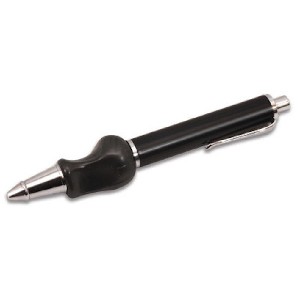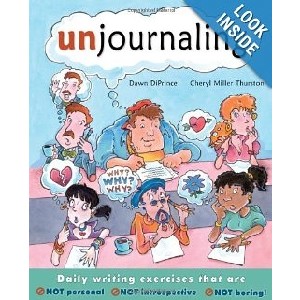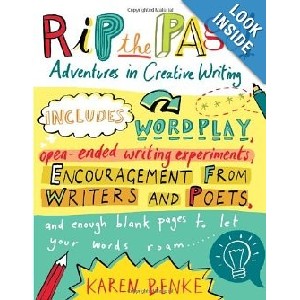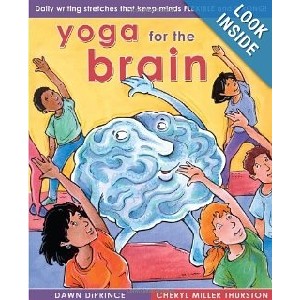 Whether they love it or hate it, being able to write well is a critical success factor in your child’s education. These writing games for kids are tops in getting them to move even further ahead. No more pulling your hair out trying to get them to write more than a few sentences and calling it a paragraph. Try these cool games and you’ll see improvement in your child’s interest and ability to handle any writing assignment.
Whether they love it or hate it, being able to write well is a critical success factor in your child’s education. These writing games for kids are tops in getting them to move even further ahead. No more pulling your hair out trying to get them to write more than a few sentences and calling it a paragraph. Try these cool games and you’ll see improvement in your child’s interest and ability to handle any writing assignment.
GAME #1 – Movie Time
Play on their love for movies
Objective: Kids create their own story board and movie script.
Supplies: Six sheets of paper per kid (3 if you use both sides and 2 if you have them use 1/2 sheet per step).
Kids will draw five movie scenes and write a script (a total of six steps) following a simple plot outline. Combining some form of art – like coloring or drawing – will keep kids who don’t enjoy writing from getting bogged down by the thought of the writing part of the game.
If the drawing part gets in the way, pull out old magazines and have kids cut out five pictures from a magazine they could use to demonstrate their movie plot.
Drawing 1:
The first scene is the beginning of the movie. It should include at least two characters and lots of detail around the setting, place, time of day, and weather conditions.
Drawing 2:
First action scene – What happens to surprise the characters in the scene? A dinosaur, a storm, a race car. Have them think of something unexpected.
Drawing 3:
Second action scene – How do the characters respond to the surprise? The characters should show some sort of emotion – surprise, happiness, joy, shock.
Drawing 4:
Third action scene – Draw the characters leaving the scene. How do they leave? Do they walk, get on a train, sprout wings and fly away?
Drawing 5:
Fifth action scene – Draw the characters relaxing after their surprise. Suggest kids think about where they would like to go to celebrate a special event.
Script:
The sixth piece of paper should be used for writing the script. Have the child write three sentences describing what’s happening in the picture and one line for each of the characters in the scene. (By line, I mean a statement said out loud by the character as actors would say in a movie.)
Have them show you their movie and give them a score for creativity, accuracy, and attention to detail. Build a “movie wall” where you post their latest movie or their highest scoring movie. You can even award “movie bucks” as prizes for the highest scoring movie script.
This is also a good game to pull out when your kids start begging to see the latest animated movie coming out in theaters. Tell them you’ll take them as soon as they finish a movie board!
GAME #2 – My Story, My Way
Rewriting a favorite book
Objective: Writing a favorite story with new ideas.
Every kid has a favorite story or book. Have them tell you about their favorite scene in the book. Pull the book out and look at any pictures for that particular scene. Ask your child to write what they would have done if they were in the story.
Some kids – even those who don’t generally like to write – are fascinated with cursive and foreign languages. If you’re teaching your children or your class these other writing options, try mixing these games in with those lessons, too. My 8 year old son thinks writing cursive is so grown up that he won’t write anything else!>
(PARENTS – a more commercial version of this idea can be found in the popular The Wimpy Kid Do-It-Yourself Book (revised and expanded edition) (Diary of a Wimpy Kid) book. My 8 year old has filled out every page of this book!)
GAME #3 – Draw My Character
A group writing activity
Objective: Kids learn the importance of writing detail in their stories.
Have kids write a description of a character they read about in a book or saw on TV. Then have them read their description out loud either to an adult or other children.
The children who are listening need to draw the character as the reader is goes through the description. The rules for the listeners/drawers are that they can’t add detail to the picture other than what they hear the first player read out loud.
When all the listeners have finished their drawings, show them to the reader and have the reader look for any missing details in each picture. This will help kids see which details they left out. You know – like when a person has no arms or legs or face, etc. 🙂 Post the final results. The person with the least amount of missing details is the winner. Great for listening skills as well as writing skills.
Unjournaling by Thurston and DiPrince
This book contains loads of fun and though provoking writing prompts for middle school kids. The goal is to get students comfortable writing by giving them topics that aren’t personal and won’t cause them to clam up about their own thoughts and feelings – something kids in the middle of puberty aren’t really keen on doing in front of their friends.
GAME #4 – Find 10 Things
Fun writing games about sights and sounds
Objective: Writing about what is seen and heard while out and about.
Take your kids to the park, the zoo, or just for a stroll downtown – even the grocery store will work. Before you set out, give each child a little notebook or piece of paper and a pencil. Explain to them that you want them to take some notes during the outing and that they should write down things that they see during the trip.
The things they should write down are those that look interesting, different or new. They should write down things they haven’t noticed before or things they don’t see everyday.
When you come home, ask them to show you a their list. The goal is for them to have at least 10 things on their written list. Come up with a cool, even simple, reward for your child writers like points towards seeing a movie, a prized snack or some other form of recognition for having really, thorough descriptions.
Tip: Let your child pick out a special notebook or journal that they can use just for writing. If they have some say in choosing something and if they know it’s dedicated to all the things they want to write down they may be more likely to write on a regular basis.
GAME #5 – Story Writing Software for Kids
Children’s Story Software
Objective: Kids write and publish their own book.
Most kids I know love computer time. That’s a perfect opportunity to work in some additional learning without them realizing you’re doing so. Use Knowledge Adventure, Books by You – creative writing software for kids to spark a child’s interest in creativity. It’s available for both Windows and Mac operating systems.
This software program will guide them further by helping them understand the structure of a story and help them write their own, unique book. Kids who experience a sense of accomplishment – like actually producing their own story – become more and more confident with their own ability and are able to be more creative in school. This leads to wonderful long-term success.
Set up a night every week or two where the whole family reads the newly created stories together!
GAME #6 – The Convince Me Game
Every time they say “I want….”
Objective: Writing a persuasive paper.
My eleven year old son hates to write. Smart as a whip but simply does not like to put pen to paper. He does, however, want a cell phone, or to go to the movies, or to get a new video game so we play the Convince Me Game. I ask him to write what amounts to a persuasive essay explaining why I should get him whichever item he’s asking for. He knows he doesn’t always get the item, but I get a lot of writing out of him as a result and, darn it – he’s a really good writer when he’s motivated!
Rip the Page!: Adventures in Creative Writing
I tripped across this book while looking for ways to deal with writer’s block and it seemed perfect for even young writers.
The ideas and challenges will get your creative juices flowing!
GAME #7 – One Word, Two Word, Three Word
Creative writing game for younger kids
Objective: Writing detailed descriptions.
We’ve all seen writing papers done by kids where they use simple, one-word descriptions in their sentences to tell a story: “I ate a banana.” “I had fun.” “I got a cookie.”
Use this game to expand their descriptive skills. You can start verbally with young children and then move to a writing game format for older children.
Put any object on display. Let’s use the banana as an example.
One Word:
Have kids tell you, or write down, the name of the object.
Two Words:
Have kids tell you, or write down, the name of the object using two words. (Example – “yellow banana”)
Three Words:
Have kids tell you, or write down, the name of the object using three words. (Example – “squishy, yellow banana”)
Now, tack the word “The” in front of the descriptive words and a blank line at the end of the descriptive words. Ask kids to fill in the blank part with something the object did: jumped, fell, danced around the room, etc.
Of course you could get really silly and see about getting up to ten words to describe the object. You’ll end up with something like this:
“The long, yellow, spotted, squishy, ripe, soft, sweet, delicious, silly-looking banana smiled at the cat.”
If you have multiple kids playing this game, give points for each unique word no one else wrote down and award simple prizes.
GAME #8 – The Family Book
Everyone gets in on the act
Objective: Writing a story as a family.
Credit for this game goes to my brother. He has three girls, two old enough to write and both are avid book readers. My brother began using his iPod for a story game with the girls by writing a few sentences of a story in his iPod Notes application. He then gave the iPod to one of his girls to write the next few sentences of the story and then to my other niece and so on.
Now, each of them – sporadically, when a thought comes to mind – grabs the iPod and adds more to the story. Not only are they having an absolutely wonderful time writing a story with Dad, it keeps them constantly thinking about new ideas to keep the story going. They don’t want the fun to end.
A number of tools could be used for this game besides an iPod. The family computer, a notebook, a pad of paper, even post-it notes to help kids feel less intimidated by large sheets of empty paper.
This game is great for parents on the go or those who travel a lot. You almost always have some form of virtual communication available – either text or email – and your child can use that to write a story to you while you’re on the road. Keeps them in touch AND writing.
February 23, 2012 Update – I originally created this list of writing games for kids about two years ago. My brother and his daughters – all 3 now, as the youngest is old enough to write – STILL keep their family story going. They’ve been using the same iPod to keep it going but have also transferred the material to their computer for safe keeping. What a great family memory this will make when the girls are older.
Update – Have an iPhone or iPad? Here’s a book writing app for kids: Creative Book Builder. It includes a number of easy to use tools to create your own book chapter by chapter. Kids can even share their books with family members through email or by exporting a finished PDF file.
GAME #9 – YouTube Video Story
Kids love videos and they’re YouTube fanatics!
Objective: Make up a story based on a video played without the audio.
Supplies: A selection of YouTube videos that are theatrical in nature and each approximately two minutes long. There are some great options of clips from British television.
Play the video so all the kids can see it but do not use the audio. Mute the volume or turn it down so they can see the clip but not hear it. Ask each child to write a story about the YouTube clip they saw. For an extra activity you can have them read their story out loud while the video is replayed to see how well their description matches up with the action in the clip.
Pick videos that display different kinds of emotions – sad, happy, scared – and also different kinds of events like parties, family gatherings and adventures. The more broad the types of clips you use, the more kids will be stretched to find words to suit the images. There are some wonderful outdoor activity videos like rafting trips, mountain climbing, and site seeing trips from around the world.
My son likes the Minecraft game and there are loads of videos online about that game. You have to screen them in advance but since they involve characters running around building things or taking on certain adventures, it provides a nice format for kids to supply the written script.
Yoga for the Brain: Daily Writing Stretches
Brains need exercise like any other part of our body. The authors of this book created some neat writing exercises that kick start creativity. Kids will find the projects make them stretch a little while still keeping things fun.
GAME #10 – Remember the Time for Kids
My kids love to hear some of the same old stories over and over. They prefer the ones of them as children or about funny things that happened during a trip.
Give each child a piece of paper that starts out “Remember the time….” and have them write their details about one of their favorite family stories or events.
GAME #11 – Laughable List of Fun
List Writing Game for Kids
Objective: Make a funny grocery list and try to match the child to the list.
Getting through life is often made easier with a list – a grocery list, a to do list, a packing list. Lists seem easier for kids to write because they don’t have to worry about sentence structure and grammar. A great way to get them comfortable with the simple task of writing words without the worry is to have them write a list.
Assign a group of children the task of writing a funny grocery list. You could ask them to list the ingredients for their favorite food in the grocery list or write out the items they want to have at their next birthday party. Set the number of items for each child to include on the list. If the children are just starting to write, five might be a good target. If they’ve been writing for a couple of years, move up to ten items or more for the list.
Once the lists are complete, read the lists out loud and see if the children can guess who wrote each list.
Pride in Writing
Emotionally connecting kids to their work
My youngest is now 8 years old and he loves writing more than his older brothers ever did. Part of the connection has been for him to have a great deal of pride in his work. He doesn’t just write stories, he makes books. He writes, colors the photos to go with the story and then staples all the pages together. Detail is very important to him so he does a cover page and a back of the book, too.
Then he puts a price on it and tries to sell it to me. 😉 I love his ambition!
Kindle Apps for Word and Writing Education
Have access to a Kindle?
There are a number of apps for the Kindle book reader that can help kids learn words, writing skills, and play word games that expand their vocabulary. Some of these apps are free and the others cost only a couple of dollars a piece.
Same goes for an iPad. A few years ago, kids wouldn’t have had the same kind of access they do today but even my kids have a Kindle or a laptop and several of my nieces have their own iPads. Make sure they’re spending as much time on educational games as they are on everything else.
Check here for a full list: Kindle Word Apps and Games
Text Writing for Kids
Cell Phones for Writing Practice
Against our family rule of “no cell phones until you’re 13”, we got our youngest a cell phone for his 8th birthday. Shortly after, he took a trip to Grandma and Grandpa’s house and I received a series of text messages throughout his stay. Because he’s not as aware of text chat as his older brothers, what I received amounts to a great deal of writing – enough that I’ll be turning it into a typed story for his scrapbook.
If you’re a parent, save text messages and convert them to a string of saved messages in your email. You could use them in writing exercises by having kids rewrite them into full stories.
Typing Intro Online Writing Games
One of today’s important skills
Objective: Learn to type.
I cheated. This isn’t really a writing game, but knowing how to type in today’s fast-paced, computer driven world is an important part of writing. In fact, many kids who hate to write with pencil and paper will jump at the chance to do so if it means they get extra computer time.
A free typing tutorial online that I like to use is from Powertyping. It’s easy to use so kids can learn, too, shows you your errors, has a different set of lessons to help you progress through the keyboard, and shows you your words per minute.
When I went to school, we didn’t learn to type until high school. This would have been almost 30 years ago. Today, my 9 year old is learning to type in 4th grade.
Scholastic Online Writing Games
Free online tools
Objective: Learn spelling, how to put words together, and writing complete sentences for story-telling.
Back to using the computer for fun, educational learning opportunities, don’t miss Scholastic’s website for a load of fun, writing games for kids.
Use a Special Pen
Ergonomic Refillable Pen for Writers
 The Pencil Grip “HeavyWeight Pen” Weighted Ergonomic Refillable Ballpoint Pen with Pencil Grip
The Pencil Grip “HeavyWeight Pen” Weighted Ergonomic Refillable Ballpoint Pen with Pencil Grip
Make writing more fun with a special pen or pencil kids can use just for these games or assignments at home. This pen is perfectly weighted to reduce writer’s cramp but also builds up the muscles in the hand used for writing. The pencil grip makes it easier to hold the pen and write for long periods of time.
It’s important that kids know how to write and to write well. As adults, they may be judged by their writing skills on college papers, job applications and resumes. Get them started now by making it fun with writing games for kids.
Have any writing games you’d suggest? Feel free to leave them in the comments section below to share with others. Thanks!



